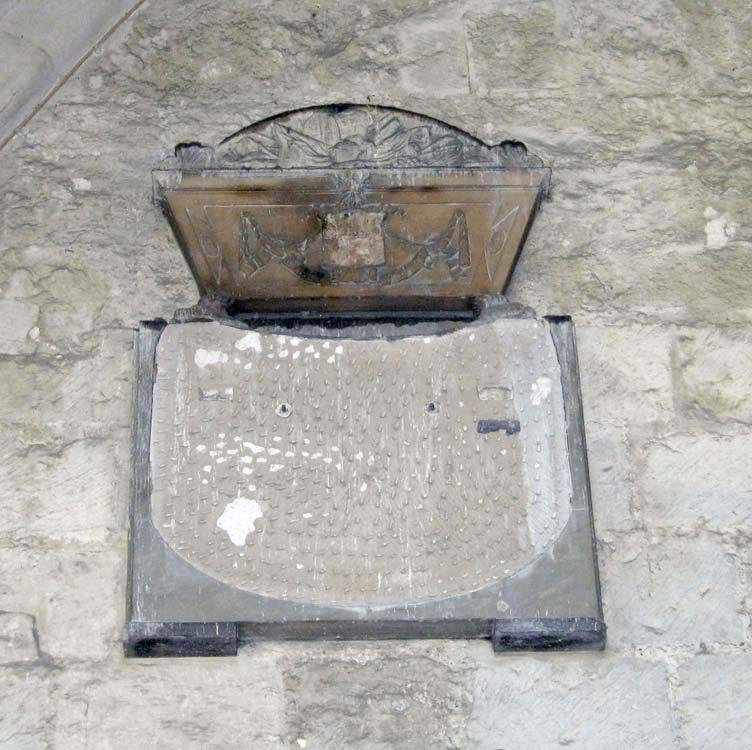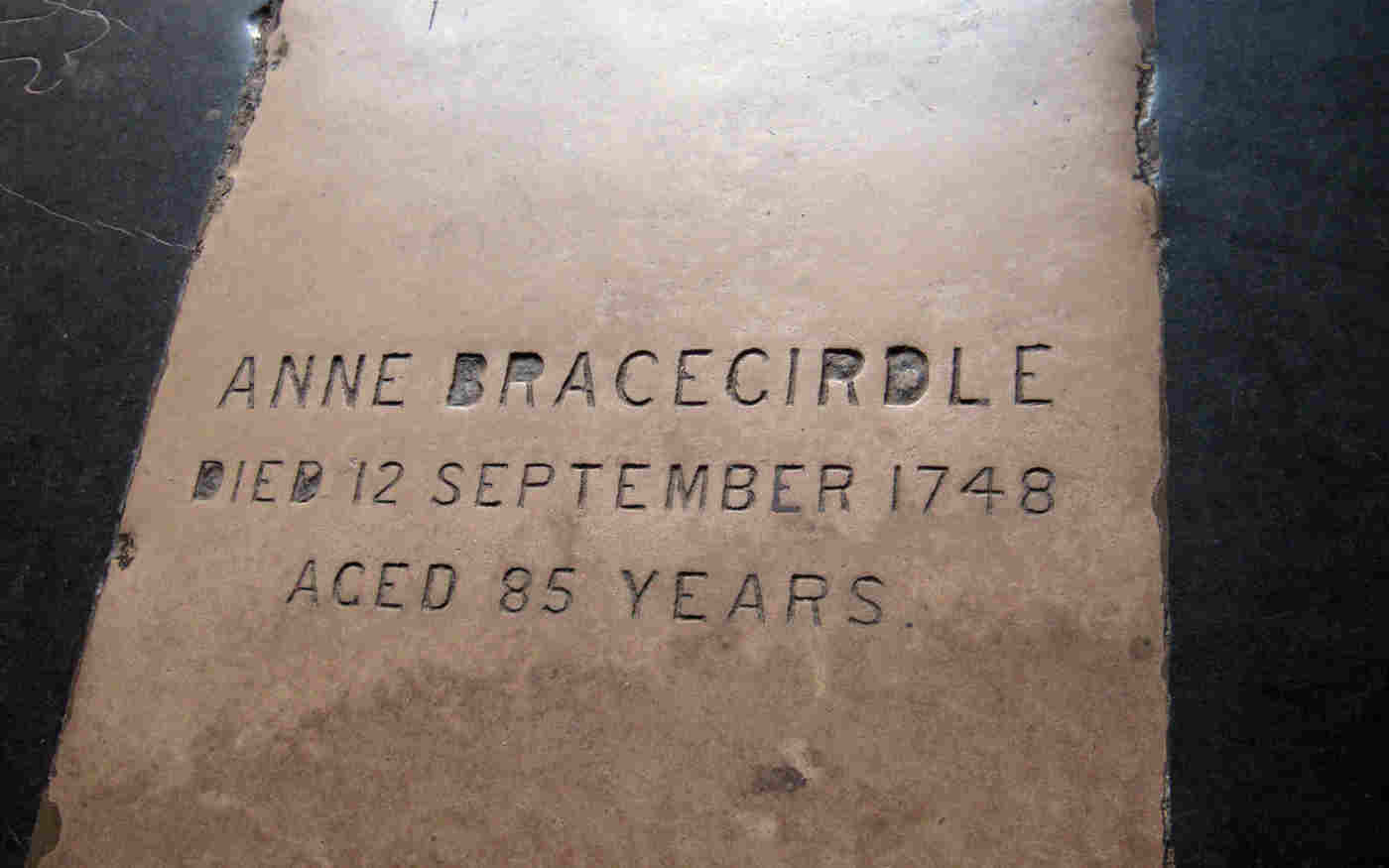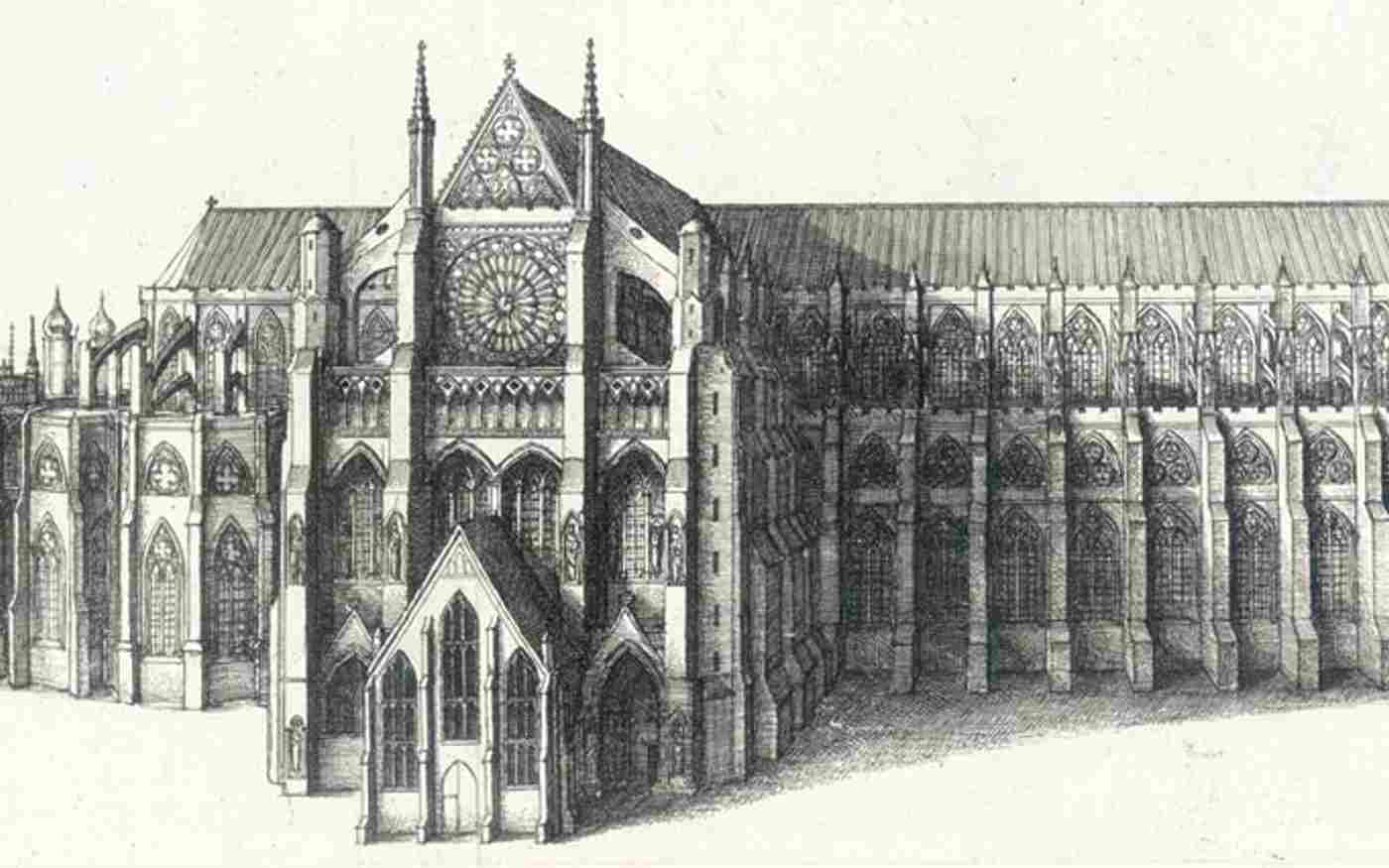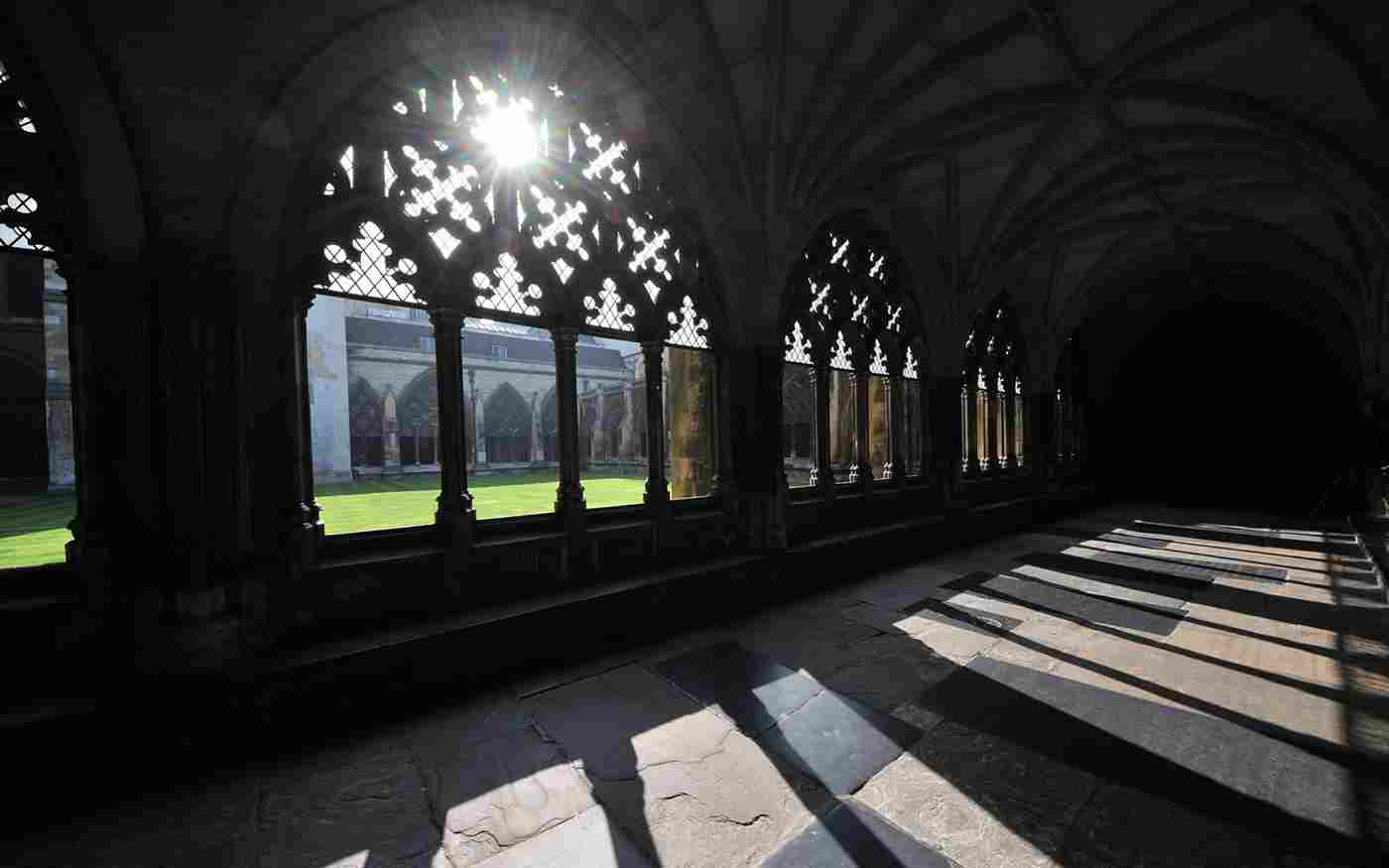Henry and James Cornewall
James Cornewall
In the entrance archway to the cloisters of Westminster Abbey is a large monument (36 feet high) to Captain James Cornewall (or Cornwall) of the Royal Navy. The monument is of white and coloured marbles by the sculptor Sir Robert Taylor. It consists of a beach scene with two caverns (one above the other), rocks, seashells, fossils and marine plants, accompanied by cannons, anchors and flags. In the lower cavern is depicted a relief of the naval battle off Toulon in which Captain Cornewall was killed. The inscription is in the upper cavern. On rocks above stands Britannia with a lion, and a figure of Fame. Between them is a palm tree on which, with naval trophies, is a portrait medallion of James, with a sculpted shield of arms. The monument was the first in the Abbey to be erected by order of Parliament to a naval hero and shows probably the earliest representation of Britannia on a monument.
It is not in its original position however. It was first erected at the west end of the nave of the Abbey at the entrance to what is now St George's chapel. In 1882 the sides of the monument were cut away to make a doorway into the chapel. In 1932 it was moved out into the cloister because the chapel was converted to a war memorial chapel. The Latin inscription can be translated:
Let there be preserved in this sacred building, amongst the monuments to antique virtue, the name of James Cornewall, third son of Henry Cornewall Esq. of Castle Bredwardine in co.Hereford; who, sprung from very ancient and illustrious Plantagenet stock, a man of truly old-fashioned spirit, grew to become, unquestionably, a most skilled naval leader. He was deservedly honoured equally by the tears and admiration of his fellow countrymen, in that, whilst strenuously advancing the cause of his country in the naval battle of Toulon, he was struck by a chain-shot that deprived him of both legs. As his final service, in the hour of death, he bequeathed as a legacy to his comrades-in-arms his own zeal, and fell, unyielding, on 11 Feb. 1743, in his 45th year. His outstanding courage could not rather be commended as an incentive to posterity by a more magnificent inscription, than by this quite singular mark of honour: when, upon a unanimous vote, the British Parliament desired that this monument should be erected at the public expense, in memory of a man of outstanding bravery
The date given on the monument is in Old Style dating, now called 1744.
He was baptised on 17th November 1698, at Moccas in Herefordshire, a son of Colonel Henry Cornewall and his second wife Susanna (Williams). His uncle was Vice Admiral Charles Cornewall. He served on the North American station and became a Member of Parliament for Weobley on his return to England, joining two of his brothers, Velters and Henry, who were already politicians. Later he served off the Moroccan coast and with Sir John Norris off Portugal. He was killed on board his ship Marlborough off Toulon and was buried at sea. His cousin Frederick then assumed command of the ship.
Henry Cornewall
His father Henry, of Bredwardine Castle, was buried on 28th February 1717 in the south aisle of the nave of the Abbey but no marker now remains for him. He was the only son of Henry Cornewall of Moccas in Hereford and his wife Frances (Pye). A page of honour to the Duke of York, he became colonel of the 9th regiment of foot and Master of the Horse to the Princess of Orange. From 1702-7 he was Member of Parliament for Weobly. An Abbey guidebook of 1722 records the inscription on his gravestone:
Here lyeth the body of Henry Cornwall of Bredwardine-Castle in the county of Hereford Esq. whose first wife was Margarita Laurentia Huyssen, of Middleburgh in Zeeland, by whom he had issue Henry his eld.son and heir now living, and William Henry who dyed an infant. To his second wife he had Susanna, one of the daughters of Sir John Williams, Bart. and by her left issue two sons, Velters and James, and one daughter name Mary, marry'd to the Honourable Henry Berkeley Esq., bro. of the Right Honourable James now Earl of Berkeley. He departed this life the 22nd day of February 1716 in the 64th year of his age.
The date given on the stone was in Old Style dating. Susanna's mother, Susanna, was married and buried in the Abbey.
A portrait of him is at the National Portrait Gallery in London.
Further reading for James
Oxford Dictionary of National Biography 2004

This image can be purchased from Westminster Abbey Library
Image © 2025 Dean and Chapter of Westminster










